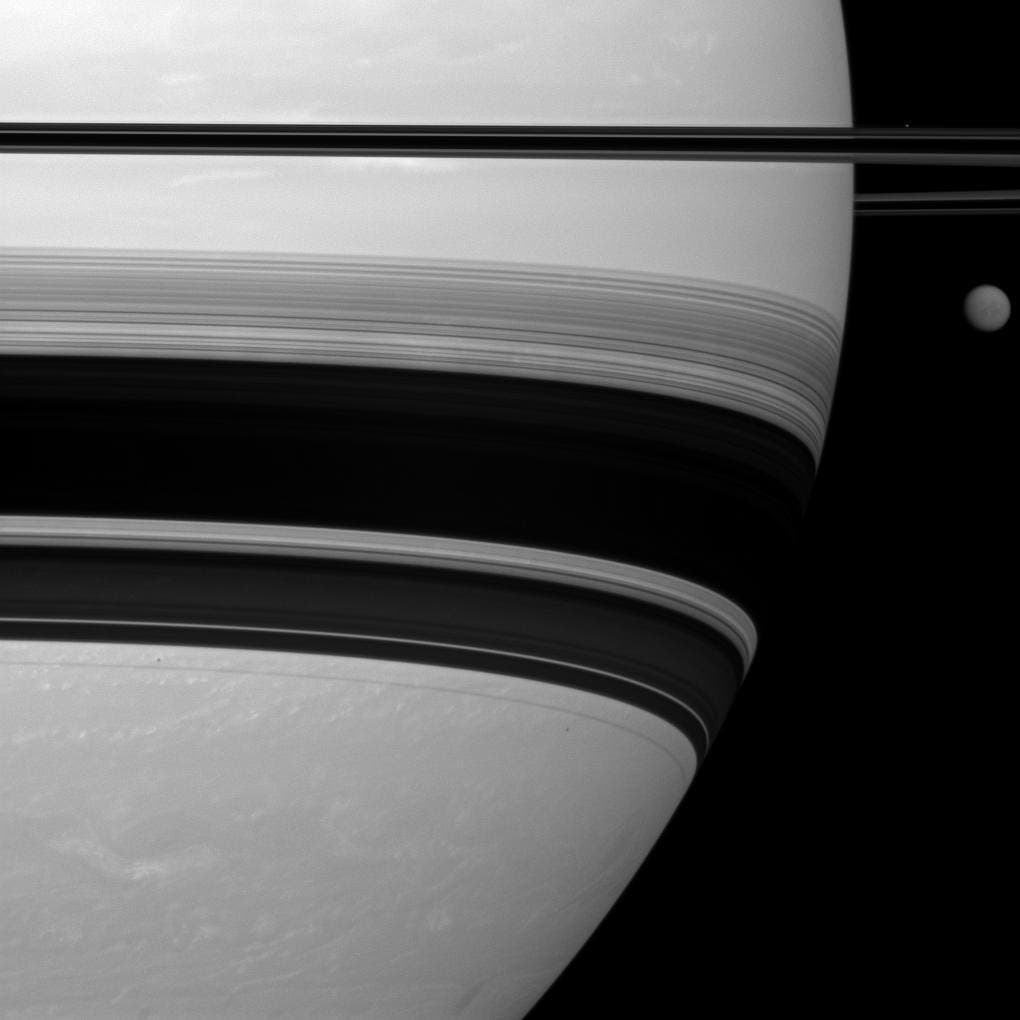Cassini has sent some new remarkable pictures which brilliantly illustrate the difference in size between Saturn and Titan, its largest moon.

Saturn dwarfs its moon easily, even though Titan, at 3,200 miles across, is bigger than Earth’s moon, which has a diameter of only 2159 miles. If you look really closely above Saturn’s rings, there is a barely visible whitish speck – the much smaller Prometheus moon, which is only 53 miles in diameter.

Cassini sent numerous remarkable pictures with Saturn and its rings, and this one definitely deserves to be at the top shelf. The rings are made of mostly of pieces of water ice, the remains of comets, asteroids or other shattered moons. The Cassini mission has twice been extended due to its numerous successes and the utility (and beauty) of the data it keeps sending.






